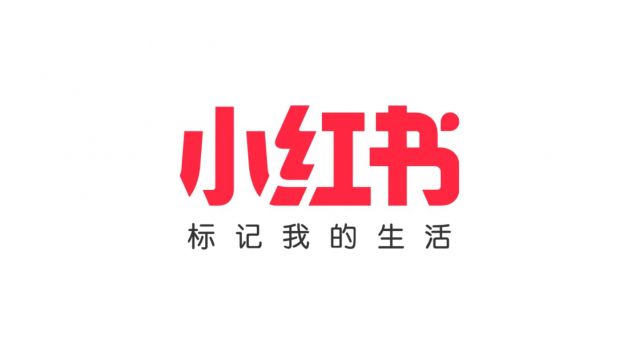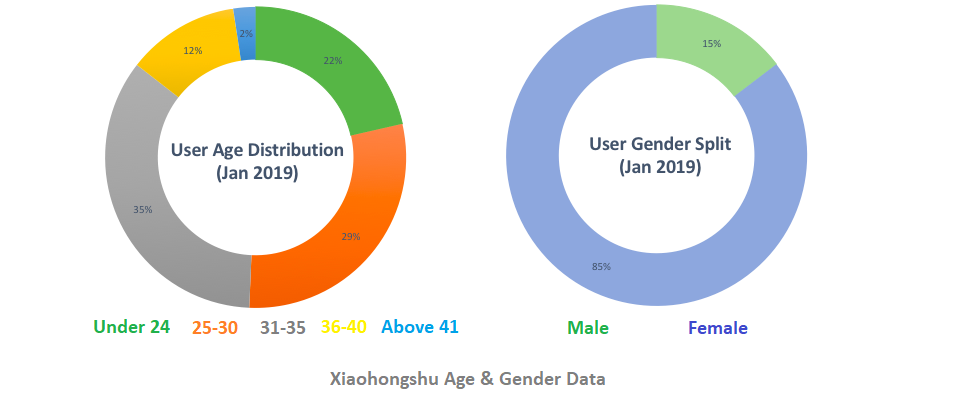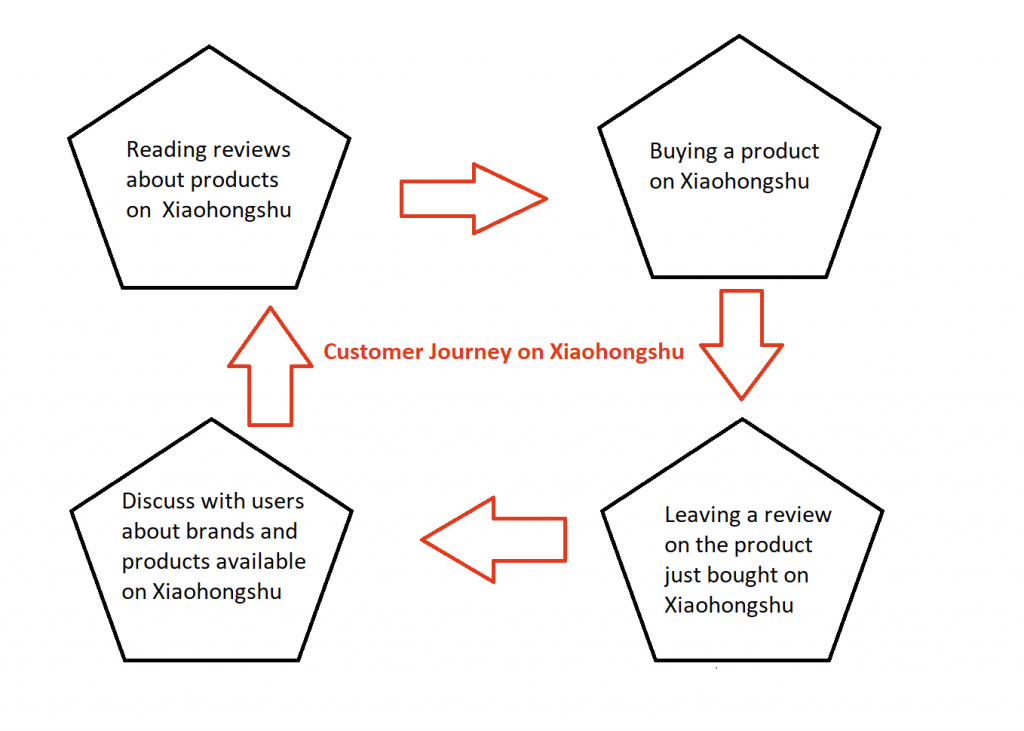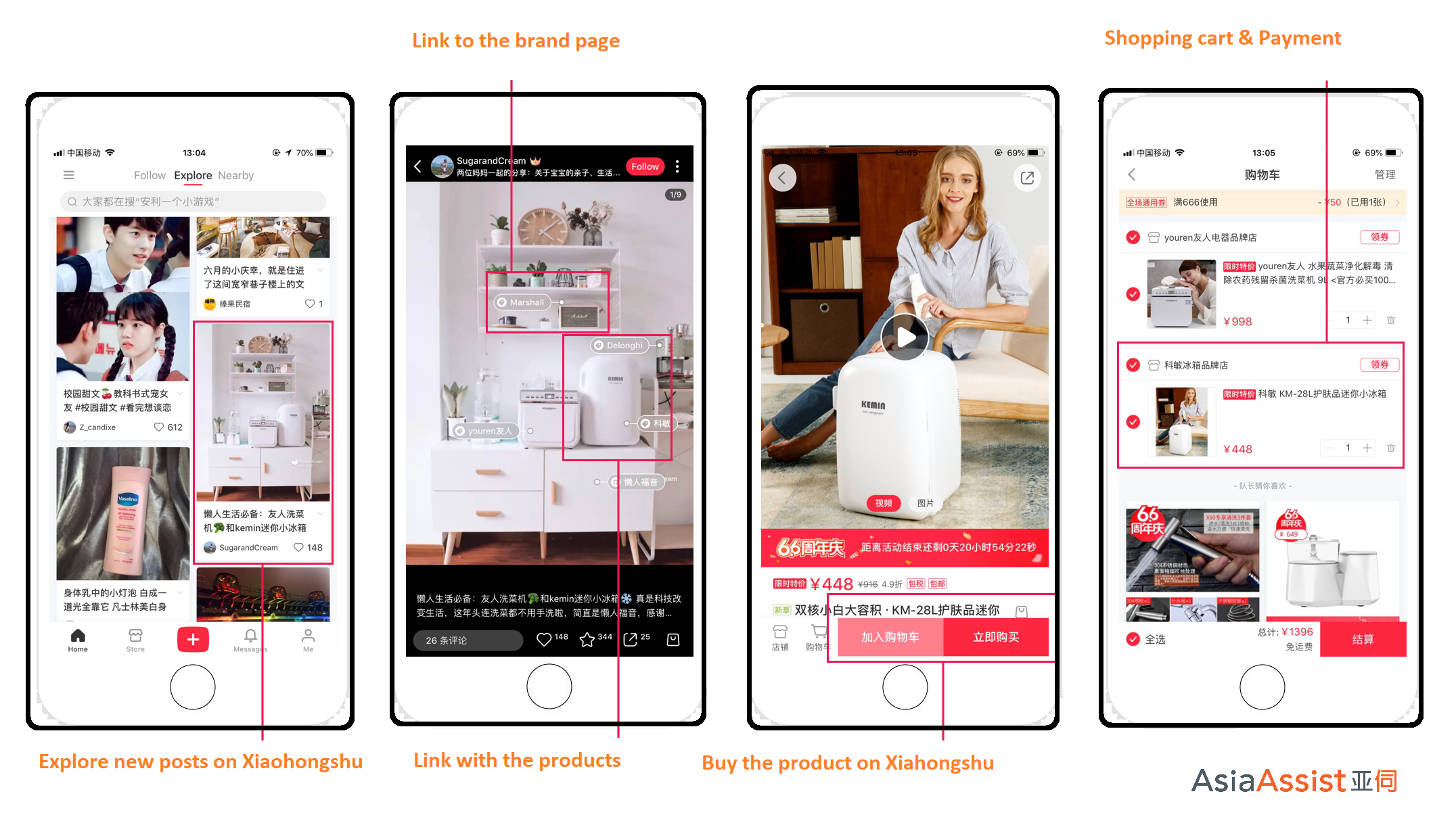Promote your Beauty Brand on China’s newest platform: Little Redbook

There is a platform which is unfamiliar to most of us in the west, but if you sell beauty products in China, it is one you HAVE to know. Not only should you know about this platform, you should use it. That e-commerce platform is Little Redbook.
Little Redbook is one of the largest e-Commerce platforms in China, with more than 150 million registered users. And it’s growing, fast! One could describe Little Redbook as a combination of Facebook and Amazon, as it is a social e-commerce platform. Users visit Little Redbook to discover international products, using the user-generated content to determine whether or not this is something they’d like to buy. With a vast array of recommendations and reviews, the Chinese consumer has discovered Little Redbook as a very reliable source of information about foreign cosmetic and beauty and health products.
For many companies, the behavior of consumers on Little Redbook is hard to understand. As a result, these companies are hesitant to join Little Redbook. We believe this to be a folly, as the platform shows a huge potential.
Brands that do join Little Redbook follow a strategy similar to what they are used to: direct sales. While this is indeed an option, it is only the surface of what Little Redbook allows you to do. It is so much more than just an elaborate webshop. Little Redbook is the lovechild of e-commerce and social media, combining the strength of both. Little Redbook isn’t about selling or buying a product, Little Redbook is about exploring and discovering. It is about sharing reviews. Little Redbook is about discovering what is hot (and what is not).

Source : Iresearch
Explore
Despite the easy process to buy a product, many consumers don’t actually buy through Little Redbook. Instead, they use the platform to find information about products. Users, mostly female, consider Little Redbook as a reliable source of product information. They visit Little Redbook not to buy the product, but to determine whether they will buy a particular beauty or health product elsewhere.
Little Redbook allows users to browse through their app to discover new products. Using undisclosed algorithms, Little Redbook will present users with products they might like. If a user does, they can click “collect” and store the product in a folder of their favorites. Additionally, Little Redbook has a feature which is very similar to Pinterest, so user can make their own boards. This board, too, will show recommended posts which are worth discovering.
All this means that brands using Little Redbook should primarily consider it as a marketing channel, and not so much as a sales channel. Use Little Redbook to share information about your product. Encourage users (both regular users and influencers) to leave reviews. Make sure that Little Redbook helps your brand become top-of-mind.

Key Opinion Leaders (KOL) love Little Redbook
To Chinese consumers, Little Redbook is equivalent to what YouTube is for European and US consumers. Unsurprisingly, Chinese celebrities love to be active on Little Redbook, making it the most favourite social media platform of China. Many of these celebrities share their opinion on products and lifestyle choices here. Due to the personal style which is so common on Little Redbook, this makes consumers feel there is a personal connection with these celebrities, influencing their purchase decisions.
China: it’s all about reviews
We won’t be telling you something you do not know when we say that product reviews are very important. Every marketer dreads the negative review online, and cheers when positive reviews appear. Consumers have learned to be sceptical about messages sent by brands. They rather trust their peers.
In China, the importance of product comparisons and reviews goes much further than that. It’s easy to understand when you consider the speed with which things have changed in China. European and US consumers have had decades during which the range of products have steadily grown. We have had time to get used to a world where we can chose from 25 different shades of red lipstick. In China, this development has been a sudden one. The Chinese consumer has rapidly become wealthier, making them crave for better quality and premium products. Suddenly, they have moved from a society where everyone used the one available product to a society where they are overwhelmed by options and choices. Chinese consumers have responded by doing thorough research when considering a purchase.
The Chinese consumer wants to feel safe, wants to know they bought a quality product. The experiences of other consumers, about product quality and intangible factors like fashionability and trendiness, help users to validate their choices. Reviews, comments and feedback from product users tell a prospective buyer all she needs to know.
This focus on research works both ways, as Chinese consumers usually leave reviews on Little Redbook of a much better quality than those on other e-Commerce websites. As marketers, we’ve grown used to reviews like: “5 stars, great product”. But on Little Redbook, you can expect an in-depth review with semi-professional photography.

Influencer collaboration on Little Redbook
By now, you will understand that you need to find a way to get influencers to be positive about your brand. Two strategies seem particularly effective. One of these, sponsored posts, is relatively easy and controllable. You make a post, you pay an amount, and the influencer will tell their follwers about your brand. The other strategy, product seeding, is more difficult. Using this strategy, you select a number of influencers that match your product and send them a product sample. Sending a free gift, however, in no way obliges the influencer to write about your product.
A typical Little Redbook product review will consist of a number of photographs with a caption in which the poster shares their experience with, and feelings about the product. The post will tell you all the upsides and downsides of the product. So make sure your product seed provides the Little Redbook influencer with material to work with. Provide them with products worthy to write about, in an attractive package. A good product seed is of good quality, well designed, attractive, matches the style of the influencer and personalized. Do this right, and you will see the attention for your brand soar.
Remember, while platforms such as Weibo are about being entertained and informed, Little Redbook is all about learning about products. So put in that extra effort.

Little Redbook ROI
Being present on Little Redbook isn’t cheap. You will need to put in a lot of effort and manpower to effectively run your influencer campaigns. Additionally, the fees that Little Redbook charges are on the high side. They charge a monthly fee of 10,000-60,000RMB (US$ 1500-9000) and a salesfee of 15-20%. If you use a company to help you run your Little Redbook presence, you can expect to pay another 5-10% of your turnover. That is, indeed, a lot of money to operate a sales platform.
But here’s the thing: It is not actually a sales platform. It is an information platform to advertise your products which are sold in stores all over China. With Little Redbook, even a small company can gain thousands and thousands of mentions. Even when you sell nothing through Little Redbook, you can still see your sales in China jump, as users turn to Tmall or WeChat to make the actual purchase.
All in all, Little Redbook is something completely new to most marketeers. In order to use it effectively, marketeers will need to change their mindset. But when they do, they will find that Little Redbook is the best social e-Commerce platform to build brands in the beauty, cosmetics and health sector.
As a local partner AsiaAssist helps brands to develop their business in China. We have a team in Rotterdam and Shanghai that can help you to develop your brand awareness though the various Chinese platforms such as Tmall , JD , Kaola and ofcourse Little Red Book (Xiaohongshu).



